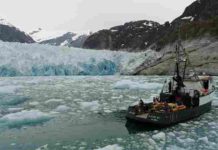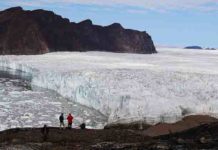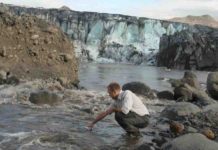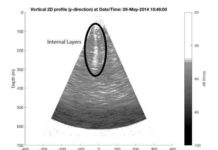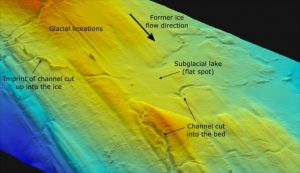
Researchers at the University of Sheffield have provided a unique glimpse into one of the least understood environments on Earth by revealing for the first time former subglacial lakes and their drainage routes beneath the North American ice sheets.
By investigating a very strange flat spot and associated channel in Alberta, Canada, which had no water in it, academics discovered the former existence of a lake trapped beneath an ice sheet during the last glaciation.
As this relict lake is no longer covered by many kilometres of ice, they were able to reconstruct what the lake would have looked like and how it drained from the landforms and sediments.
Their observations, published in the journal Nature Communications today (Monday 13 June 2016), suggest the lake existed as a shallow lens of water which repeatedly drained through channels cut into the bed.
The team’s results provide constraints for the modelling of similar subglacial lake drainages beneath the Antarctic and Greenland ice sheets. These are a crucial component of the subglacial hydrological system, able to store and rapidly drain large volumes of meltwater, but we do not know enough about the drainage process to fully understand their influence on ice flow.
Dr Stephen Livingstone, from the University’s Department of Geography and lead author of the paper, said: “We’ve seen these flat spots connected to relict channels in Canada, and are inferring these as former subglacial lakes and their drainage imprint. As ice no longer covers these relict lakes, our discovery has allowed us to reconstruct how the subglacial lakes would have looked and how they drained from the landforms and sediments. Our results provide key constraints for the investigation of modern subglacial lakes beneath the Antarctic and Greenland ice sheets.”
Reference:
Stephen J. Livingstone, Daniel J. Utting, Alastair Ruffell, Chris D. Clark, Steven Pawley, Nigel Atkinson, Andrew C. Fowler. Discovery of relict subglacial lakes and their geometry and mechanism of drainage. Nature Communications, 2016; 7: ncomms11767 DOI: 10.1038/NCOMMS11767
Note: The above post is reprinted from materials provided by University of Sheffield.







